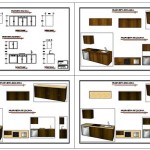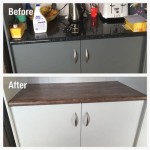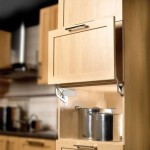How To Remove Paint From Kitchen Cupboard Doors And Drawers At Home
Repainting kitchen cabinets can offer a fresh and updated look, but removing old paint from cupboard doors and drawers can be a challenge. Whether you're dealing with stubborn layers of paint or simply trying to achieve a smooth finish, understanding the best methods is crucial. This article provides a comprehensive guide to effectively remove paint from kitchen cupboard doors and drawers at home, ensuring a successful renovation project.
Understanding Your Paint Situation
The first step is to assess the type of paint and the condition of your kitchen cupboard doors and drawers. Consider these factors:
- Paint Type: Identify whether the paint is oil-based or water-based. This determines the appropriate removal techniques.
- Paint Layers: Count the number of paint layers. Multiple layers require more effort to remove.
- Surface Material: Determine the material of your cupboard doors and drawers (wood, laminate, melamine, etc.) as certain methods are suitable for specific materials.
- Surface Condition: Check for any existing damage, such as cracks or chips, which may influence your approach.
Knowing these details helps you select the most effective method for paint removal.
Choosing the Right Paint Removal Method
Several methods can be employed to remove paint from kitchen cupboard doors and drawers. Each has advantages and disadvantages, so choosing the right one depends on your situation. Consider the following options:
1. Chemical Strippers
Chemical strippers are highly effective in removing multiple layers of paint. They work by dissolving the paint, making it easier to scrape off. However, these strippers can be harsh and require careful handling. Ensure proper ventilation and wear protective gear, including gloves, goggles, and a respirator.
Pros:
- Highly effective in removing multiple layers of paint.
- Available in gel and liquid forms to suit different applications.
Cons:
- Can be toxic and require careful handling.
- May damage certain surfaces, like laminate or melamine.
- Require proper ventilation and protective gear.
2. Heat Guns and Scrapers
Heat guns soften the paint, making it easier to remove with a scraper. This method is relatively quick and can be used on various surfaces, including wood and laminate. However, it requires careful handling as excessive heat can damage the surface.
Pros:
- Effective in removing multiple layers of paint.
- Relatively quick and efficient.
Cons:
- Requires careful handling to avoid burns or surface damage.
- May create fumes and require proper ventilation.
3. Sanding
Sanding is a more time-consuming method but offers greater control over the paint removal process. It's suitable for removing thin layers of paint and creating a smooth finish. Use appropriate grit sandpaper, starting with coarser grits for initial removal and finer grits for smoothing. This method is ideal for wood surfaces.
Pros:
- Provides greater control over paint removal.
- Suitable for creating a smooth finish.
Cons:
- Can be time-consuming.
- May generate dust and require proper ventilation.
4. Paint Remover Pads
Paint remover pads offer a convenient and mess-free option for removing paint. They are available in various formulations, suitable for different paint types and surfaces. While they may not be as effective as chemical strippers, they are a good alternative for smaller areas or light paint layers.
Pros:
- Convenient and mess-free.
- Suitable for various paint types and surfaces.
Cons:
- May not be as effective as chemical strippers.
- May not remove all paint layers.
Safety Precautions
Regardless of the method chosen, prioritizing safety is crucial. Always wear appropriate personal protective equipment (PPE), including gloves, goggles, and a respirator, especially when working with chemical strippers or heat guns. Ensure adequate ventilation by opening windows and using fans to prevent inhaling fumes.
Keep children and pets away from the work area, and store chemical strippers and other hazardous materials safely. Follow the manufacturer's instructions carefully and store unused products in their original containers.
Preparing Your Kitchen Cupboard Doors And Drawers
Before beginning the paint removal process, prepare your kitchen cupboard doors and drawers thoroughly. Remove the doors and drawers from the cabinets to provide easy access and proper ventilation. Clean the surfaces with a damp cloth to remove dirt and grime. You can also use a degreaser to remove any grease or oil residues. Allow the surfaces to dry completely before proceeding with paint removal.
Post-Removal Procedures
Once you've successfully removed the paint, thoroughly clean the surfaces with a damp cloth to remove any remaining residue. If you used chemical strippers, neutralize any leftover chemical with a baking soda solution, followed by a thorough wash with soap and water. Let the surfaces dry completely before sanding or applying a new coat of paint.
Finally, remember that safety is paramount. Always wear protective gear and follow the instructions carefully when working with paint removers. With proper preparation and the right tools, you can successfully remove paint from your kitchen cupboard doors and drawers, giving your cabinets a fresh and updated look.

How To Strip Paint Off Kitchen Cabinets And Furniture

Instantly Remove Plastic Coating From Kitchen Cabinets

How To Strip Paint Off Kitchen Cabinets And Furniture

How To Strip Paint From Cabinets Angi

How To Paint Kitchen Cabinets Without Sanding Or Priming

How To Paint Cabinets Without Removing Doors House Mix

How To Repaint Painted Cabinets

Diy Painting Your Kitchen Cabinets The Right Way

How To Paint Kitchen Cabinets With A Gun Painttech Training Academy

Kitchen Spray Painting For A Fresh New Look The Facelift Company
Related Posts








